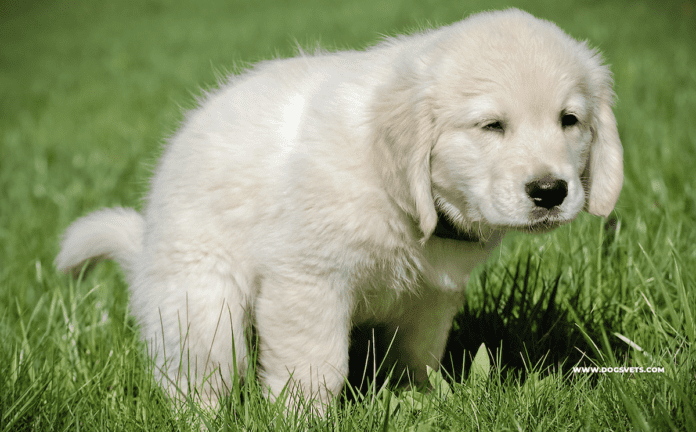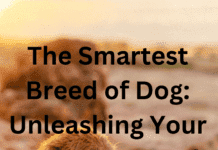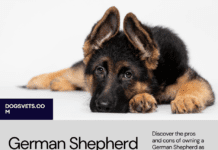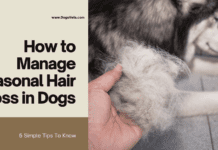Last Updated on April 21, 2023 by Dogs Vets
Most Common Dog Potty Problems and Solutions
As pet owners, we understand that maintaining a clean and healthy environment for our dogs is crucial for their well-being.
One of the most challenging aspects of pet care is dealing with dog potty problems.
In this article, we will discuss the most common dog potty problems and provide practical solutions to help you and your furry friend live a more comfortable and stress-free life. Let’s dive into the world of dog potty issues and solutions.
1. Housebreaking Difficulties
One of the most common challenges pet owners face is housebreaking their dogs. Dogs, especially puppies, may struggle to understand the appropriate place to eliminate. This can lead to accidents around the house and frustration for pet owners.
Solutions:
- Consistency: Establish a regular feeding and potty schedule to help your dog understand when and where it’s time to go.
- Positive Reinforcement: Reward your dog with treats and praise when they successfully eliminate in the designated area.
- Supervision: Keep a close eye on your dog and learn their pre-potty cues, such as sniffing or circling. Interrupt them and redirect them to the proper potty area when you notice these cues.
- Patience: Remember that housebreaking takes time and effort. Be patient with your dog as they learn.
2. Marking Behavior
Some dogs may engage in marking behavior to establish territory or communicate with other dogs. This can be frustrating for pet owners, as it often results in soiled furniture and carpets.
Solutions:
- Neutering/Spaying: Altering your dog can significantly reduce marking behavior.
- Cleaning: Clean marked areas thoroughly with an enzymatic cleaner to remove the smell and discourage future marking.
- Behavioral Modification: Work with a professional trainer or behaviorist to address and correct your dog’s marking behavior.
3. Submissive and Excitement Urination
Dogs may urinate in response to submission or excitement, especially in puppies or timid dogs. This can be a source of frustration for pet owners, as it often occurs during greetings or playtime.
Solutions:
- Gradual Desensitization: Expose your dog to the stimuli that cause excitement or submissive urination in a controlled and gradual manner.
- Calm Greetings: Keep greetings low-key and avoid overwhelming your dog with excessive excitement.
- Training: Teach your dog to perform an alternative behavior, like sitting or lying down, during high-excitement situations.
4. Urinary Incontinence
Urinary incontinence is the involuntary leakage of urine, which can be caused by various factors, including weak bladder muscles, spinal cord injuries, or congenital abnormalities.
Solutions:
- Veterinary Care: Consult with your veterinarian to determine the cause and appropriate treatment for your dog’s urinary incontinence.
- Medications: Depending on the cause, your veterinarian may prescribe medications to manage the condition.
- Dog Diapers: Use dog diapers or absorbent pads to manage incontinence and keep your home clean.
5. Medical Issues
Certain medical conditions can cause dogs to experience potty problems, such as urinary tract infections (UTIs), kidney disease, or diabetes.
Solutions:
- Veterinary Diagnosis: If you suspect a medical issue, consult your veterinarian for a diagnosis and treatment plan.
- Regular Checkups: Schedule regular veterinary checkups to monitor your dog’s health and catch potential issues early.
- Medications and Diet: Follow your veterinarian’s recommendations for medications, diet, and lifestyle changes to manage the underlying medical condition.
6. Stress and Anxiety-Related Accidents
Dogs can experience stress and anxiety for various reasons, including changes in their environment, separation from their owners, or fear-inducing events. These emotional states can lead to potty accidents.
Solutions:
- Identify Stressors: Determine the cause of your dog’s stress and anxiety and work to reduce or eliminate it.
- Behavioral Modification: Consult with a professional trainer or behaviorist to help your dog cope with stress and anxiety.
- Environmental Enrichment: Provide a calming and stimulating environment for your dog, including toys, comfortable bedding, and opportunities for exercise and socialization.
7. Senior Dog Potty Problems
As dogs age, they may experience a decline in cognitive function, mobility, and bladder control, leading to potty accidents.
Solutions:
- Regular Veterinary Care: Schedule regular checkups with your veterinarian to monitor your senior dog’s health and address any emerging issues.
- Accessibility: Provide easy access to a designated potty area and consider using indoor potty solutions, such as pee pads or grass patches, for dogs with mobility issues.
- Patience and Understanding: Recognize that accidents may become more frequent as your dog ages, and approach these situations with patience and compassion.
8. Diet-Related Problems
A dog’s diet can significantly impact their elimination habits. A poor-quality diet, food allergies, or sudden changes in food can lead to potty problems.
Solutions:
- High-Quality Diet: Feed your dog a high-quality, balanced diet that meets their specific nutritional needs.
- Gradual Food Transitions: When changing your dog’s diet, do so gradually over 7-10 days to avoid upsetting their digestive system.
- Allergy Testing: If you suspect a food allergy, consult your veterinarian for testing and dietary recommendations.
9. Environmental Factors
The environment in which your dog lives can influence their potty habits. Factors such as limited access to a suitable potty area, extreme weather conditions, or distractions can lead to accidents.
Solutions:
- Appropriate Potty Area: Ensure your dog has access to a clean, safe, and comfortable area to eliminate.
- Weather Protection: Provide shelter from extreme weather conditions, such as rain, snow, or heat, when your dog needs to eliminate.
- Minimize Distractions: Reduce distractions in the potty area, such as loud noises or other animals, to help your dog focus on the task at hand.
10. Inadequate Potty Training
In some cases, potty problems arise from inadequate or inconsistent training methods.
Solutions:
- Positive Reinforcement: Utilize reward-based training methods to teach your dog where and when to eliminate.
- Consistency: Be consistent in your training approach and expectations to help your dog understand the rules.
- Professional Help: If you struggle with potty training your dog, consider enlisting the help of a professional dog trainer or behaviorist.
Conclusion
Dealing with dog potty problems can be challenging, but understanding the underlying causes and implementing appropriate solutions can significantly improve your dog’s elimination habits and overall well-being.
By addressing these common issues, you can create a happier, healthier environment for both you and your furry friend.
Frequently Asked Questions
Q1: How long does it typically take to potty train a puppy?
A: Potty training a puppy can take anywhere from a few weeks to several months, depending on the dog’s breed, temperament, and consistency of the training methods.
Q2: Can a dog’s potty habits change over time?
A: Yes, a dog’s potty habits can change over time due to factors such as aging, medical issues, or changes in their environment.
Q3: Why is my dog suddenly having accidents in the house?
A: Sudden changes in a dog’s elimination habits may be due to medical issues, stress, anxiety, or changes in their environment. It is essential to consult with a veterinarian to rule out medical problems.
Q4: Can I use crate training to help with potty training my dog?
A: Yes, crate training can be an effective method for potty training. Dogs typically avoid eliminating in their sleeping area, so using a crate can help teach your dog to hold it until they can go outside.
Q5: How often should I take my dog outside to potty?
A: The frequency depends on your dog’s age, breed, and individual needs. Puppies generally need more frequent potty breaks, while adult dogs may need to go outside 3-5 times a day.
Q6: How can I tell if my dog’s potty problems are due to a medical issue?
A: Signs that your dog’s potty problems may be due to a medical issue include increased frequency of elimination, straining to urinate, blood in urine or stool, or changes in the color and consistency of their waste. Consult with a veterinarian if you notice these signs.
Q7: Is it possible to retrain an adult dog with potty problems?
A: Yes, adult dogs with potty problems can be retrained. Consistent, positive reinforcement-based training methods, patience, and addressing any underlying issues can help improve an adult dog’s elimination habits.
Fact Check
We hope you enjoyed reading this article. What are your thoughts on the topic?
“At [Dogsvets.com], our goal is to bring you the most accurate and up-to-date information on all things pet-related.
If you have any additional insights or would like to advertise with us, don’t hesitate to get in touch.
If you notice any errors or discrepancies in our content, please let us know so we can correct them.
We welcome your feedback and encourage you to share this article with others.”

















